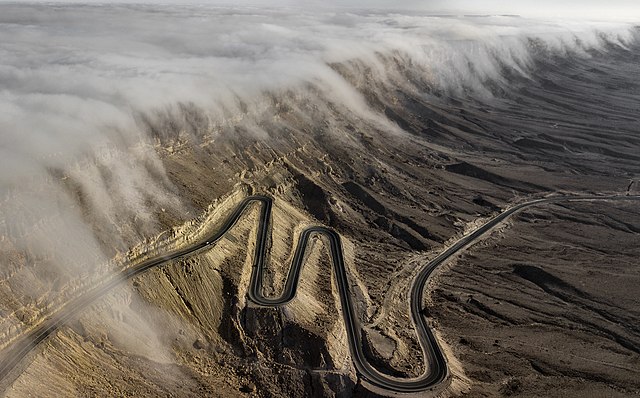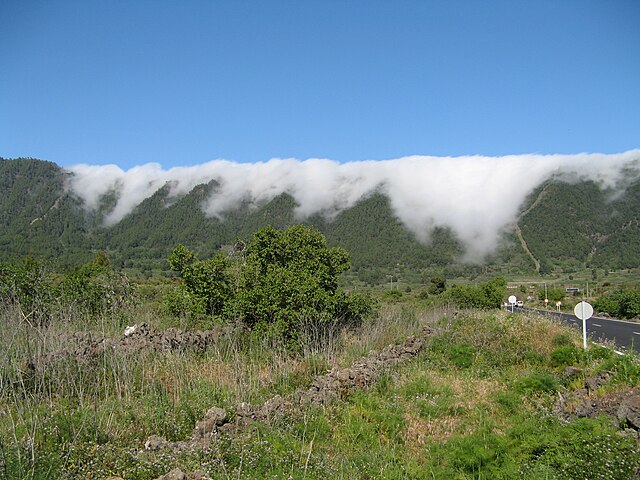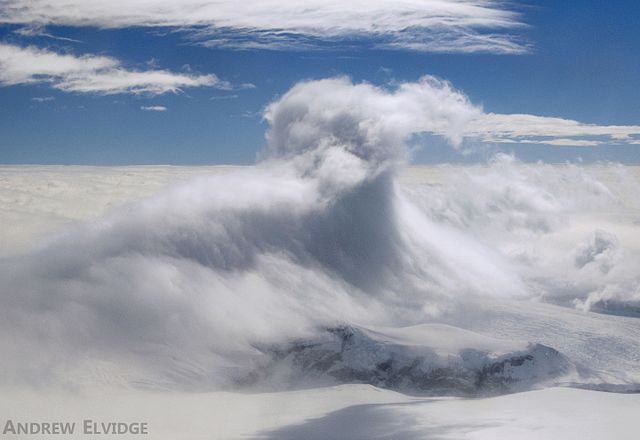A katabatic wind carries high-density air from a higher elevation down a slope under the force of gravity. Such winds are sometimes also called fall winds; the spelling catabatic winds
is also used. Katabatic winds can rush down elevated slopes at hurricane speeds, but most are not that intense and many are 10 knots or less.
Plateau-cooled air falls into the Makhtesh Ramon, traced by radiation fog, just after dawn. Radiative cooling of the desert highlands chills the air, making it more dense than the air over the lowlands. Cooler air can also hold less water vapour; it condenses out as tiny fog droplets, which re-evaporate as the air warms. Here, the falling air is warming adiabatically, and so the fog re-evaporates as it falls.
Katabatic wind in Antarctica
A Foehn or Föhn, is a type of dry, relatively warm, downslope wind that occurs in the lee of a mountain range.
It is a rain shadow wind that results from the subsequent adiabatic warming of air that has dropped most of its moisture on windward slopes. As a consequence of the different adiabatic lapse rates of moist and dry air, the air on the leeward slopes becomes warmer than equivalent elevations on the windward slopes.
Dissolving Föhn clouds over Cumbre Nueva (1400 m), La Palma
The warm moist air from northern Italy is blocked on the windward side, loses much of its water vapour content, and descends on the French plateau and valley of the Mont-Cenis range in the Maurienne valley.
Rotor cloud revealing overturning and turbulence above the lee slopes of the Antarctic Peninsula during a westerly Foehn event
Foehn clouds upon the Karawanken mountain range, Carinthia, Austria






